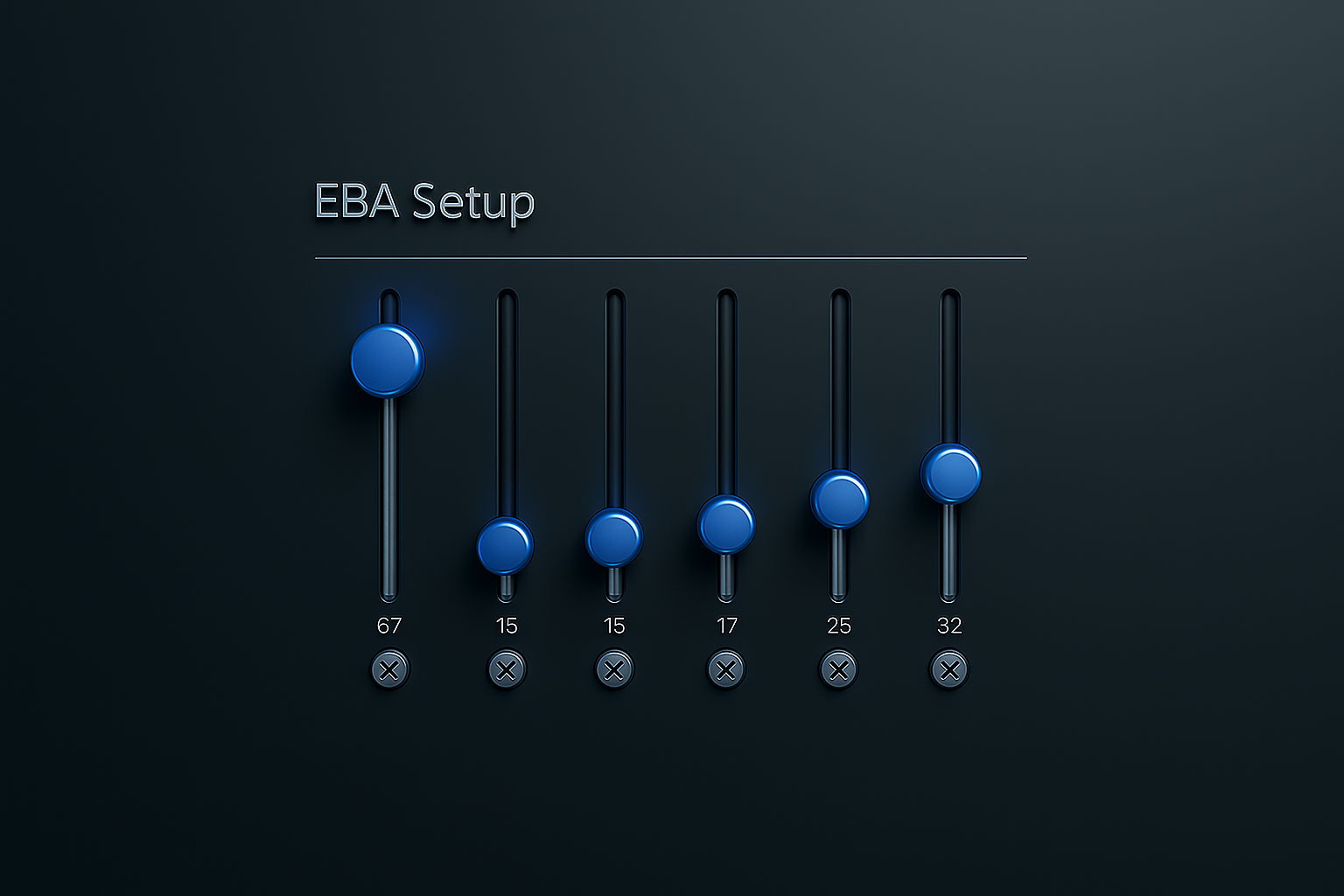Attribution has spent the last decade pretending to be more intelligent than it is.
First-click tells you discovery is everything. Last-click acts like nothing else mattered. Data-driven attribution hides behind a black box and a badge of confidence no one can audit.
And yet, budgets are still wasted. Channels get credit they didn’t earn. And sessions that had real impact go unnoticed.
At Incendium, we stopped trying to make broken models work harder — and built a better one - EBA (Effectiveness-Based Attribution)... but more on that later.
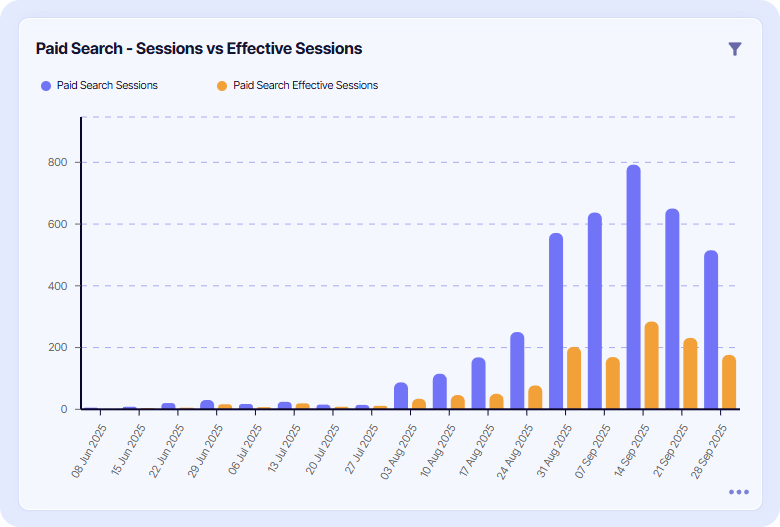
First, Where Current Attribution Models Go Wrong
Let’s be real: most attribution models weren’t designed for how people actually buy today.
Here’s what marketers are still stuck with:
- Last-click: Gives full credit to whoever was standing closest to the finish line.
- First-click: Treats introductions like full commitments.
- Linear: Pretends every touchpoint did equal work (as if a homepage bounce = cart add).
- Position-based: Rewards being early and late — ignores everything effective in between.
- Data-driven: Platform-controlled and channel-biased, offering “trust us” instead of proof.
The common flaw? They focus on where a touchpoint sits in the journey, not what it actually did.
Enter EBA: Attribution Based on Actual Effectiveness
Effectiveness-Based Attribution (EBA) changes the question from:
❌ “Who was first or last?”
to
✅ “Which sessions moved the user meaningfully toward conversion?”
At the heart of EBA is a new unit of measurement - Effective Pageviews (EPVs)
Effective Pageviews (EPVs)
An EPV is earned when a user shows intent — not just movement.
Examples include:
- Time on page past a defined threshold
- Scroll depth that indicates real engagement
- Interactions with key elements (reviews, forms, add-to-cart)
- Movement deeper into the funnel
- Page-specific signals of buying intent
These effective pageviews are used as an indication of an effective session by the visitor, rather than treating all sessions as having equal value.
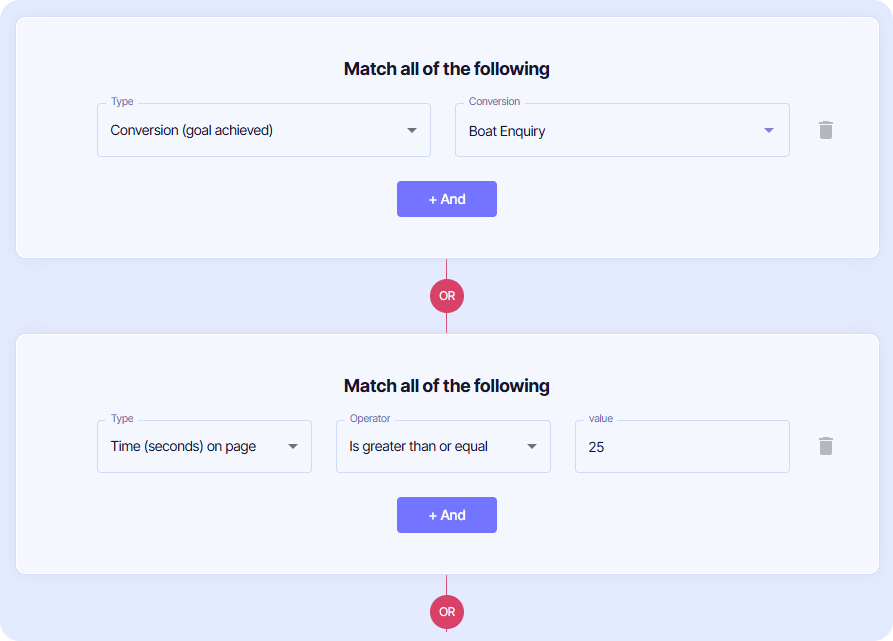
What Makes EBA Different
Rather than spray credit across every touchpoint or hand it to the closest click, EBA applies simple logic:
- Only effective sessions get credit.
- Each is measured by total EPVs earned.
- Credit is distributed proportionally, based on contribution to the journey.
- The total conversion value is split fairly.
Result:
Upper, mid, and lower funnel activity all get recognized when they actually do work.
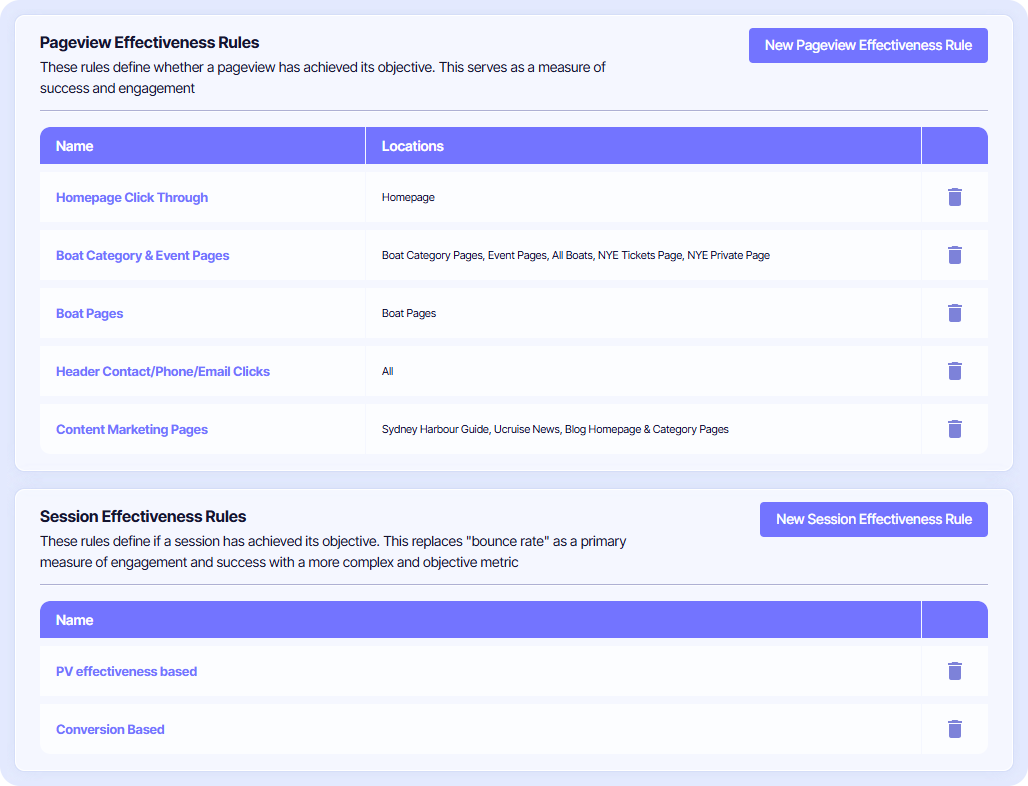
A Quick Scenario
A user makes a product purchase after three sessions:
- Session 1: Homepage → Category → About page
(effective pageviews counted: 3) - Session 2: 4 PDPs viewed + wishlist interaction
(effective pageviews counted: 5) - Session 3: Returns direct, adds to cart and checks out
(effective pageviews counted: 2)
Total effective pageviews counted: 10
Here’s how common attribution models would divide credit vs Incendium's EBA model:

Traditional attribution rewards timing. EBA rewards effectiveness.
EBA is Built for How Marketing Actually Works
EBA is already powering smarter decisions for ecommerce brands, agencies, and B2B teams using Incendium’s platform.
What they get:
✅ Accuracy
Credit goes to sessions that actually drove intent.
✅ Transparency
No black boxes. Rules and weights are completely configurable.
✅ Cross-channel fairness
Upper and mid-funnel finally get the credit they earn.
✅ Optimization power
Better bidding, budgeting, and creative testing.
✅ Independence
Unlike Google’s DDA, EBA isn’t influenced by media platforms.
Implemented, Not Hypothetical
EBA isn’t just a framework — it’s live inside Incendium’s analytics platform, with:
- Real-time reporting at the session and campaign level
- Custom weight configurations
- API integrations with major ad platforms
- Dashboards built for action, not interpretation
You don’t have to replace your tech stack — EBA layers over it and gives you vision where attribution has been blind.
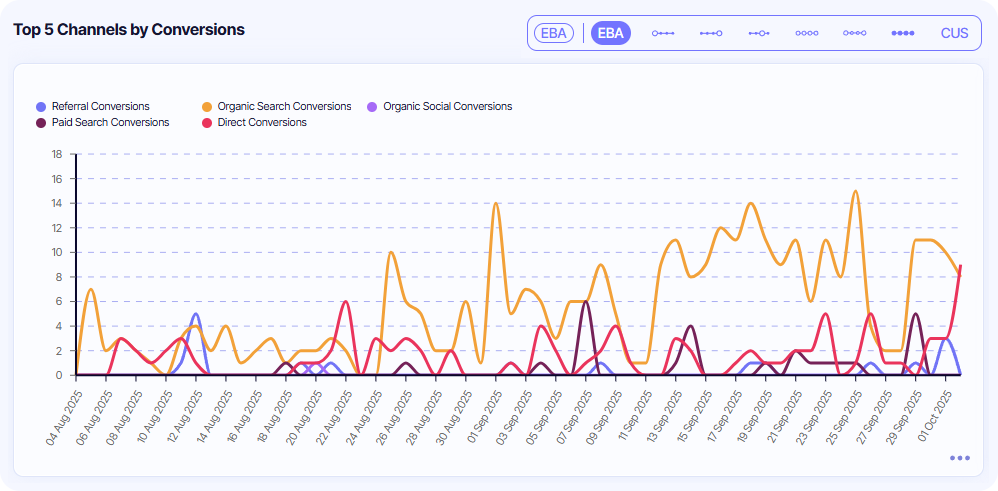
Customizable Beyond Effectiveness
EBA doesn’t stop at attribution based on effectiveness triggers. Inside Incendium’s platform, you can fine-tune how credit is assigned with fully customisable sliders. That means you can apply standard EBA logic for accuracy and fairness — and then layer in your own business-specific rules. Whether you want to give more weight to upper-funnel activity, balance credit evenly across touchpoints, or design a completely unique model, EBA gives you the control to make attribution work the way you need it to.
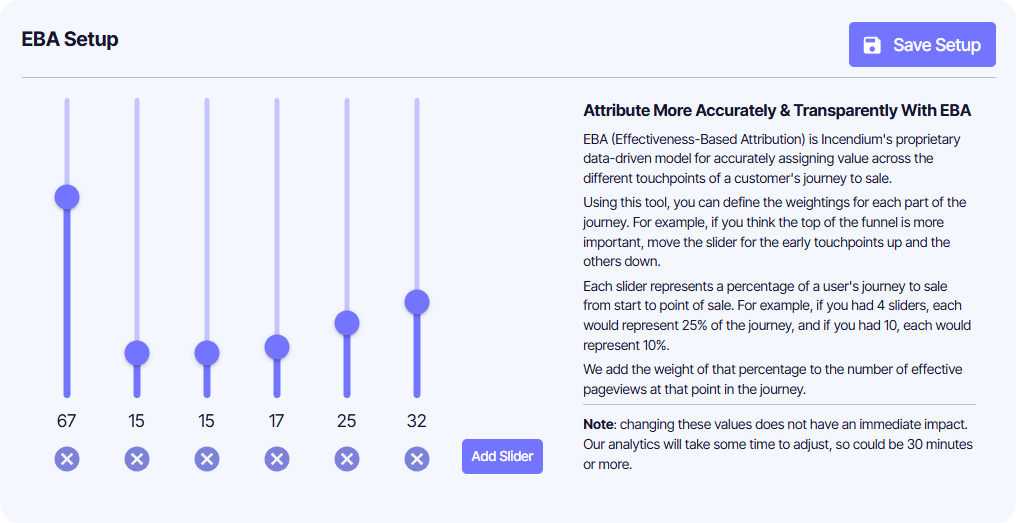
Want the Full Methodology?
The full mathematical model, configuration options, and use cases are detailed in our whitepaper.
📄 Get the full EBA whitepaper
The Bottom Line
Attribution should answer one question:
What actually moved the user closer to buying?
EBA is the first model built to answer that truthfully — and transparently.
If you’re done rewarding the wrong parts of the journey, EBA is your upgrade path.



